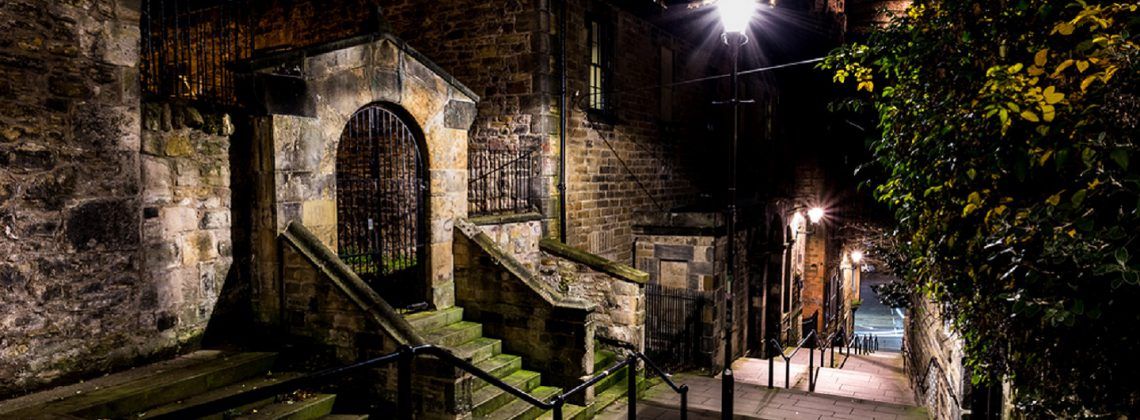Edinburgh is home to ancient underground vaults that have been part of this city’s history for more than 200 years. These vaults carry symbolic, cultural, and historical value for not only Edinburgh but also Scotland. Both locals and tourists also visit and tour the Edinburgh Underground Vaults to get a greater understanding of the past of this city. From spooky journeys and illegal whiskey-making rooms, this article covers everything you need to know about the Edinburgh underground vaults.
What Exactly Are The Underground Vaults In Edinburgh?
I recently went on a tour of our very own underground vaults here in Edinburgh so I could share interesting facts and other information about this core attraction that’s still a living part of this historic city. The following information is gathered from my observations and from the excellent tour guide from Mercat Tours.
The first thing to know is that the Edinburgh underground vaults have a deeply embedded history which dates back to the 1780s, though some areas like King Mary’s Close date back further to the 17th century. Made up of 19 huge arches and numerous rooms and passageways, the underground vaults support the South Bridge of the city.
However, it’s crucial to explain the purpose for which these vaults were constructed, which is part of what we’ll cover in this article. Keep reading to learn the history, purpose, and current use of the Edinburgh underground vaults.
The History Of Edinburgh’s Underground Vaults:
Edinburgh’s underground vaults has been a part of the city for hundreds of years, and they played a fundamental role for the city. For example, the city constructed these vaults to expand the city outwards to the north and south to deal with the population problems within the city.
Overpopulation was a major problem, and vaults were seen as a solution to put the poor underground so the city could use more space. The subterranean caverns became like a second underground city — sometimes three- and four-storeys deep.
As a result, building these vaults was a way to solve the big problem of access to the areas in the north and south of Edinburgh. Additionally, these vaults have been used for different purposes including storage rooms, taverns, pubs, and more. Business tried to use them for storage under the business, but the conditions didn’t always favor food stores, so the area became a popular place for criminals and prostitutes.
Some of these vaults are still used today as nightclubs and even as a theatre. But most of the underground vaults are now outdated and in unusable condition due to misuse and age.
Here are the topics we’ll cover in this article:
- Why were the underground vaults built?
- Who built the vaults?
- What to see in the vaults
- The vaults today
- Spooky facts about the vaults
- How to get to the vaults
- Edinburgh underground vault tours
Why Were The Underground Vaults Built?
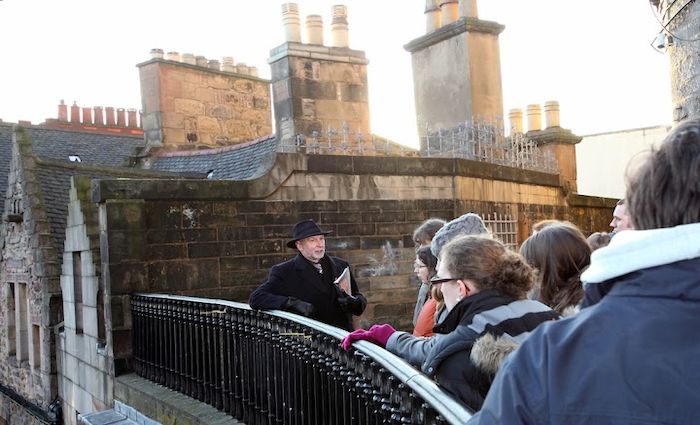
The 1700s was a period that brought change to Scotland and Edinburgh. As a result, constructing the Edinburgh vaults had many purposes in mind. For example, English invasion was a frequent threat since the two places were in constant conflict.
A solution to protect the citizens was to build the vaults and secure Edinburgh’s people safe underground. Also, building these vaults allowed the city have access to more land since some of the population lived underground.
The growing population was also a core problem in the city and vaults were thought to be a good solution. One main rationale for this was that the poor people had a chance to live cheaper with plenty of storage space. Although, the vaults smelled terribly and was rather dark, people made it work by adjusting the atmosphere with lamps and scents.
Additionally, constructing the vaults made room for the expansion of the city to the north and south. The underground city was perceived as a solution to creating access to areas of the city as well since they provided unity and space to move faster and easier. For example, using these vaults underground meant less traffic and faster movement compared to the streets above.
Who Built The Vaults?
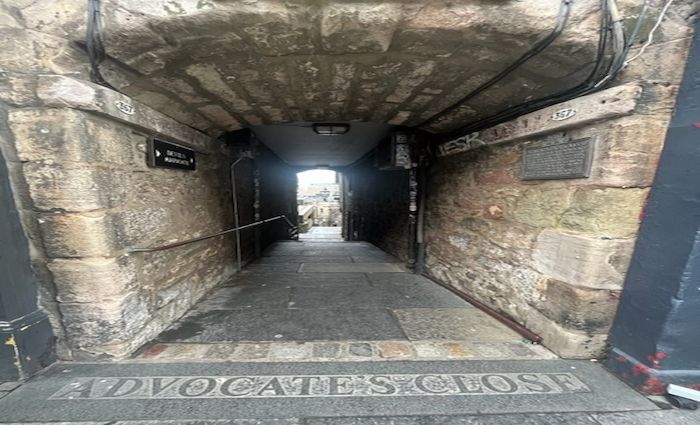
Lord Provost, Sir James Hunter Blair was instrumental in creating the South Bridge, which is a large part of where these vaults are. However, there were many questions raised when the suggestion to build the vaults gained popularity. Citizens were concerned with whether the vaults would be safe, and if there was enough budget to build them.
Another concern stemmed from how the streets would be influenced by traffic. Although the South Bridge caused much frustration to the wealthy population, it opened in November 1776, after three years of construction.
However, problems emerged with these vaults, caused by rain and poor drainage, overpopulation, and sewage and poor hygiene, ultimately making the situation of the vaults to go from bad to worse until they were abandoned by the 1860s. Certainly, these problems paved the way for many to actively forget the very existence of the underground vaults.
Rediscovered in the 1980s by Norrie Rowan, the vaults became more of a tourist attraction, and some usable areas have been repurposed for current commercial use.
What to See in the Underground Vaults
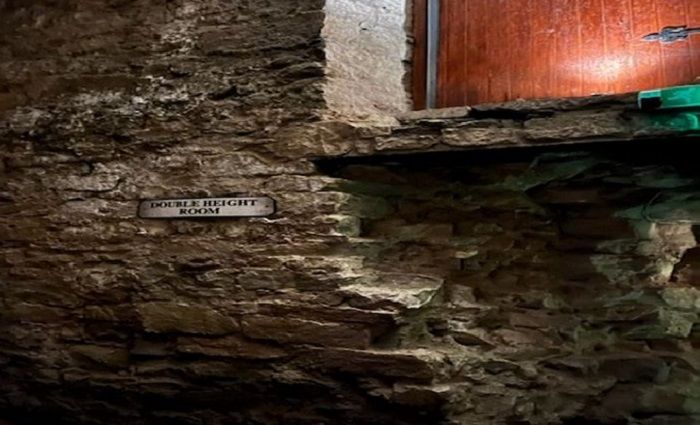
Edinburgh’s vaults were mostly occupied by workers and the poor. Therefore, the vaults had different uses and structures that met their needs. The underground vaults consist of nine main rooms which include the kettle room, storage rooms, double-height room, tavern room, Niddry Street corridor, cobbler’s room, wine vault, the caretaker’s room, and the white room.
Although, nine rooms might not sound like a lot, these rooms were huge like their own underground city. Each vault had a special function and made it distinct.
The Nine Main Vaults
To keep people warm and cosy, the kettle room was formed with brick shelves and a stone fireplace for gathering together. However, the storage room had a different purpose to store goods and the valuables of people living there. The double-height room was part of the city’s commerce since the room was for workshops of craftsmen.
The tavern room was often filled with oysters, which were (and are) cheap and nutritious. They made up a major part of the diet of the poor during the 1700s. The tavern room also has crucial historical value for social and economic classes too. One reason is because, during the 1700s it was common for different classes to mix in dark cellars below taverns to drink and eat. The tavern room was always the place to go for great food and socializing.
Additionally, the Niddry Street corridor holds great importance for both the past and present people in the city, largely because these privately owned vaults are now utilised as pubs and clubs. Since the 1800s, these vaults have gained a notorious reputation due to their popularity and their criminal element that always lingers in dark, hidden areas of a city.
The cobbler’s room is one of the most active paranormal rooms due to the spirits left behind here. Although, the spirits are usually friendly, such as the shoemaker. But not all of them are as nice as others.
Edinburgh is famous for beer brewing, but in the 1700s, Scotland’s national drink was claret. Therefore, the wine vault held great value in the city for storing wine in the dark, cool vaults. Both the wine vault and the caretaker’s room were known for storing wine.
The remaining room was the white room vault. It’s still unknown what this room’s purpose was. Some say this room was for delivering goods into the vault since there’s a large window, but it’s anyone’s guess.
Planning a trip to Edinburgh? Make sure to check our list of the top things to do, our guide to Harry Potter stops, plus where to stay in Edinburgh!
The Vaults Today
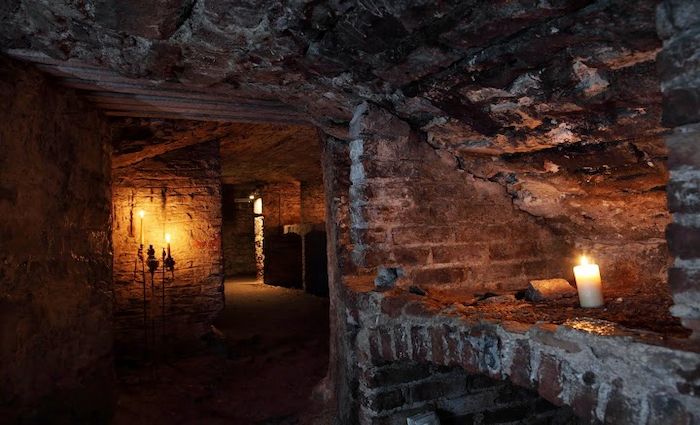
There has been no major reconstruction of the South Bridge, although the bridge has had a few structural problems due to its age. However, various changes have been made to the underground vaults of the South Bridge for use in today’s era. For instance, after the reconstruction, the vaults now house nightclubs, a theatre, and more.
With great care, electricity was also put into these vaults. But the chambers retain their original sense and character. Therefore, you can still feel the historical essence of the underground city in Edinburgh.
Spooky Facts About The Underground Vaults
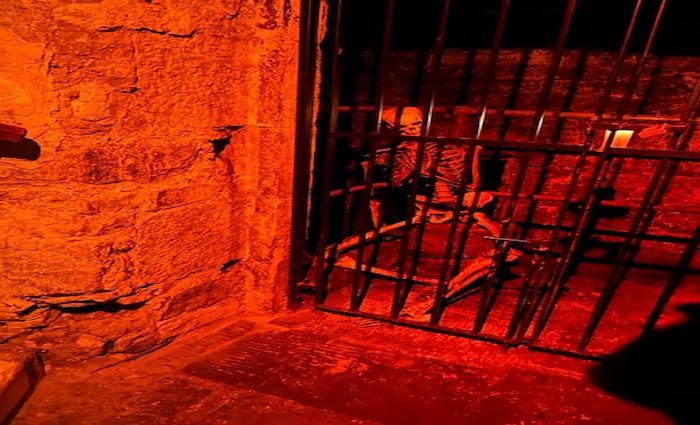
Although the Edinburgh vaults are known for their historical significance, they’re also famous for their spooky and paranormal experiences. For instance, the caretaker’s room is an area of high paranormal activity where people have heard screaming, crying, and the moaning of children. But the caretaker’s room is not the only vault that holds ghostly incidents.
The spirits of the vaults have made themselves known in other areas tourists frequent. For example, some people have seen figures in the rooms when the rest of the vaults were empty. Also, some people have reported hearing footsteps when everyone else was standing quietly. Some people have also mentioned that they have felt changes in the atmosphere from one vault to another.
It’s likely that the spirits of these vaults are the restless souls of forgotten residents of the vault. To sum up, the vaults under the city of Edinburgh have displayed spooky and ghostly events and activities for tourists for years.
How To Get To The Underground Vaults
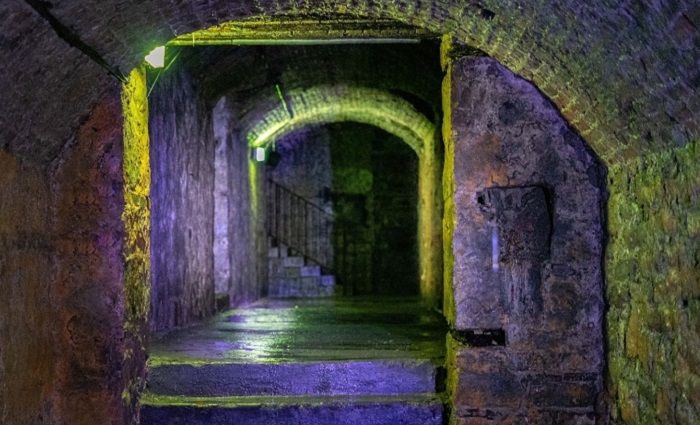
The Edinburgh underground vaults are easy to find from many parts of the city since it’s primarily located in Old Town. The vaults are also close to many transportation options which makes them centrally located.
All of the transportation options will direct you to the tours that are explained down below such as the Mercat Tours entrance. Also, the common transportation options will send you to Blair Street were all the fun is, such as the underground nightclubs and tour selections. To sum up, all the transportaion alternatives provide you to the same spot along the Blair Street underground vaults, so pick according to your budget and convenience.
By Bus:
There are frequent bus services which stop on Blair Street where the Edinburgh underground vaults are located. There are a few best and sensible routes to use for accessing this location. They are North Bridge, Perrymans, and First Bus. Also, you can use George IV Bridge, which is ideal.
I mostly recommend North Bridge and George IV Bridge because seating is easier to find. Visit Lothian Buses website for correct routes.
By Train:
The nearest rail station is Edinburgh Waverley. This station is the quickest and best choice since it’s the closet to the vaults, and the distance to them is just a 5-10 minute walk.
By Tram:
Edinburgh’s trams are easy to access and are available every seven minutes from early morning until late at night. Also, the tram line runs from the Airport to York Place. However, the nearest tram stop to the vaults is St Andrew’s Square. Check Edinburgh Trams website for exact times and locations.
By Taxi:
Taxi is another alternative to use when going to Blair Street vaults. Central taxis are a good option to use, but this won’t be the most affordable option.
By Car:
There’s pay-and-display, on-street car parking available on Blair Street close to the vaults. Also, there is car parking present on the following streets: Cowgate, Blackfriars Street, and Chambers Street.
I don’t suggest coming with car since it’s hard to find a parking spot. However, if you prefer this route I advise you to park on Blair Street because it’s central and closest to the vaults.
Pro Tip: If you park on Blair Street, be aware that car parking is limited and only the left hand side of the street is available. I strongly suggest you come early and get a spot.
Underground Vault Tours
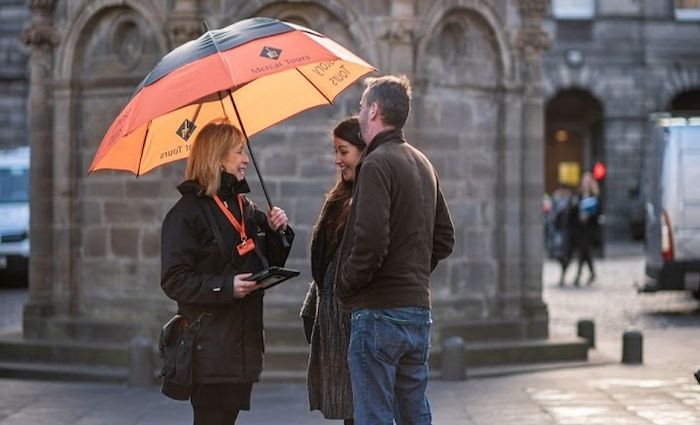
There are a few tour companies in Edinburgh that provide guided tours of the underground vaults. You can’t explore the Edinburgh vaults without a tour guide. I also fully suggest you take a guided tour to have the full experience and knowledge of the vaults. The best underground vault tour companies are Mercat Tours, City of Edinburgh Tours, and Auld Reekie Tours.
You can check out the kinds of tours they offer to choose what interests you most whether it’s vault history or something more specific like the Real Mary King’s Close where plague victims were known to be left for dead.
Mercat Tours:
Mercat Tours has a wide range of guided tours of the Edinburgh underground vaults which you can pick according to your preference. For example, if you want to have a spooky tour, then Mercat offers a Ghostly Underground tour. However, if you prefer historical tour that is more fact based, then you should try Historic Underground. Or book the Real King Mary’s Close tour to learn about the people who lived underground.
City of Edinburgh Tours:
Also, City of Edinburgh Tours has great underground vault tours. For instance, the Old Town and Underground Ghost Tours are all things spooky and paranormal fun. Similarly, the Extreme Paranormal Ghost Tour is recommended for ghost lovers and people seeking a scary adventure. Additionally, City of Edinburgh Tours offers historical tours where you can enjoy learning a more historical and interesting perspective.
Auld Reekie Tours:
Auld Reekie Tours provides guided tours from Late-Night tours to Ghostly tours and more. However, Auld Reekie Tours is based on scary, mystical, and ghostly tours rather than historical tours. As a result, I suggest picking this tour company if you want a spooky adventure and tour.
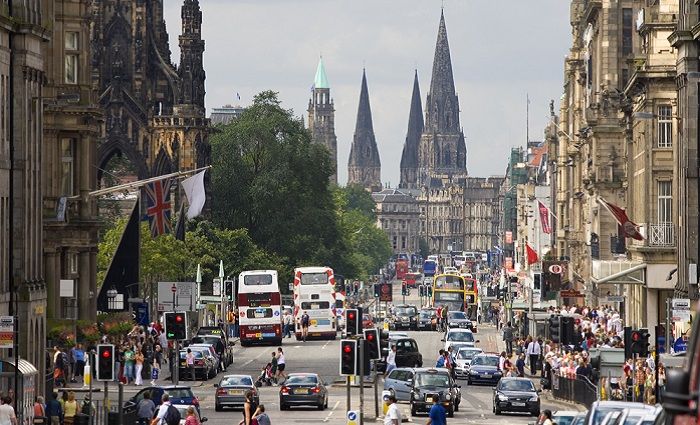
Where to Stay in Edinburgh
Get to know the best areas to stay in Edinburgh. We’ve recommended our favorite hotels for those who love to stay in the busy city or out along the coast for more peaceful views of the sea.
